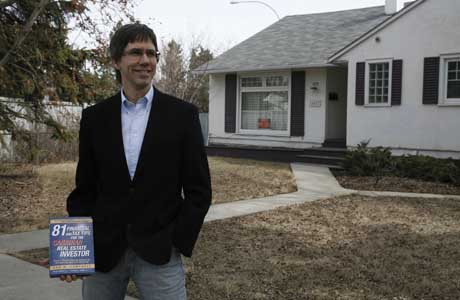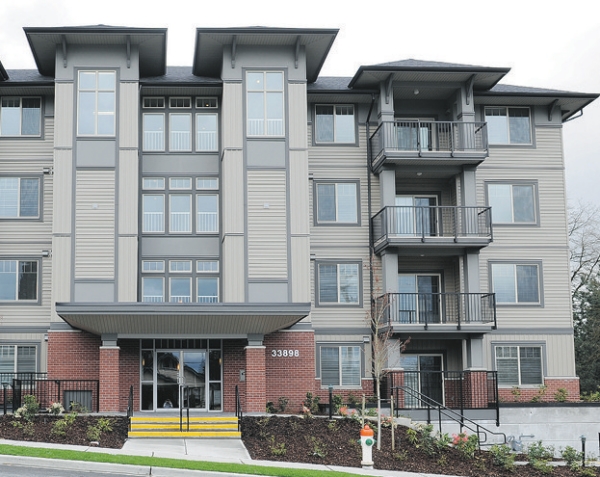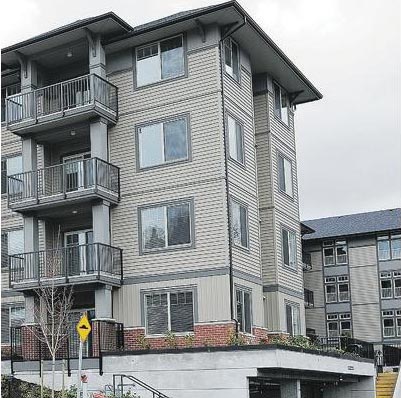Rate increases hinted at as economy rebounds
Ray Turc Hansky
Province
Without announcing last call, Canadian banks have taken the punch bowl away from the mortgage party that millions have enjoyed, and hangovers are looming.
Last summer, the Bank of Canada and Federal Reserve in the U.S. said their overnight-lending interest rates would remain near zero until at least the middle of this year. The reaction by Canadians was to buy houses with rates at historic lows, and party on.
But as economies in North America began rebounding, central banks hinted rate increases could occur fairly soon, especially in Canada.
Bond rates rose in anticipation and that was the catalyst for banks to lift five-year mortgage-interest rates, generally by 0.6 per cent — the greatest single-day hike since 1994 — to 5.85 per cent. That’s an increase of $88 in monthly payments on a $250,000 mortgage for 25 years.
And they’ve only just begun. The C.D. Howe Institute suggests the Bank of Canada should raise its overnight rate by 1.75 per cent in the next year, likely lifting five-year mortgage rates to seven per cent, while other economists envision a five-year rate as high as 8.25 per cent in two years.
That presents a dilemma for prospective homebuyers. Should they join an anticipated rush to purchase homes now and lock in at low rates, although housing prices could climb immediately with a blip in buyers during this period? Or should they wait for the frenzy to die down, expecting house prices to be lower in 12 months than they will be in three, even though mortgage rates will be higher a year down the line?
A major consideration should be whether you can handle lower mortgage rates now in this recovering economy better or worse than you would be able to handle higher payments a year from now when the economy, we hope, has improved and the employment situation has stabilized somewhat.
The Conference Board of Canada released a report saying one-fifth of Canadians already cannot afford both good-quality housing and either nutritious food or healthy recreational activity.
And the Bank of Canada reported that if mortgage and consumer-credit interest rates went up one per cent, a record-high 9.6 per cent of households would be deemed financially vulnerable.
The question is whether we will pass the tipping point from people being unable to get into the housing market to the state where existing homeowners are unable to keep the roofs over their heads.
You don’t need long memories to recall how prolonged low-interest rates after 9/11 eventually led to massive foreclosures in the U.S. when homeowners couldn’t afford payments once rates rose.
York University finance professor Moshe Milevsky says that instead of just considering financial savings in whether to have a short-term variable or long-term fixed mortgage, a person also should consider debating whether going with a short-term mortgage will leave a person unable to qualify for renewal, say if they lose their job, at variable and short-term rates.
Adrian Mastracci, with Vancouver’s KCM Wealth Management , says: “If you can stand the inevitability of higher payments, a variable rate can still make sense.
“But those that have no wiggle room on increased payments should look at a five-year rate.”
He also suggests paying down lines of credit aggressively before rates climb, investigating the penalty to refinance your mortgage at a lower rate if possible, considering a mortgage that is partly fixed and partly variable, and shopping around and negotiating for the best rates.
With rates so low, financial institutions had little wiggle room to offer valued clients lower-than-posted mortgage rates, but that expands as posted rates go up.
And that segues into one of the three mortgage changes the federal government brings into force later this month. In the past, borrowers had to make enough family income to pay the three-year fixed-mortgage rate to qualify for a mortgage, and the new rules mean you will have to earn enough family income to handle the five-year fixed rate.
On the positive side of rising interest charges, a widening spread between borrowing and lending rates means bank shares should do well and they may be able to increase dividends.
And for investors who turned to safety amid the volatility of equity markets in recent years, rising rates should start to improve returns on vehicles like guaranteed-investment certificates and money-market funds and high-interest bank accounts.
© Copyright (c) The Province
















